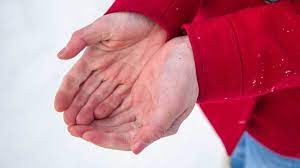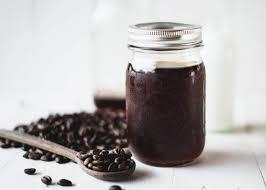Content of the Article
From time to time, you may have seen videos of people taking a cold shower on social media, getting into a bathtub filled with ice and cold water, and diving into freezing mountain lakes. If you think of these as just social media trends, you are wrong. Soaking the body in water cold enough to freeze bones is actually an ancient practice called cryotherapy. Research shows that cold water therapy is the use of water to promote health and manage illness.

It is a treatment method that has been used since ancient times. It is primarily used to accelerate recovery after injuries, relieve joint and muscle pain, and accelerate recovery after exercise. Cold water therapy is an evolving field and is practiced as a complementary therapy. Studies indicate that it is an effective method for improving mood along with pain and muscle injuries.
What is Cold Water Therapy?
Many cultures around the world have used cold water therapy for thousands of years. For example, soaking in cold water was used for therapeutic and relaxation purposes in Ancient Greece, according to a review published in February 2022 in the European Journal of Applied Physiology.
According to the same review, doctor Edgar A. Hines, in the early 20th century, studied how immersion in cold water affected the body. In particular, it has uncovered research that helps us understand its effects on blood pressure and the autonomic nervous system. In the early 2000s, researchers studied how cold water affects circulation and how it affects certain cellular processes that cause muscle damage as a result of exercise. Many professional athletes are starting to turn to cold water therapy to aid recovery after exercise.
Wim Hof is the person who has recently drawn attention to cold water therapy. Hof, known as the Ice Man, is a Dutch extreme athlete who earned that name by breaking world records for exposure to cold. According to his own website, his abilities include swimming under ice for about 217 feet and standing in a bowl filled with ice cubes for more than 112 minutes. He developed the Wim Hof method, which is a combination of breathing work, cold therapy, and devotion practices with what he learned from his cold experiences. Those who argue that this method is beneficial say that it gives energy, strengthens the immune system, improves sleep and helps the body heal faster.

What Does Cold Water Therapy Do?
Exposing the body to cold water causes the blood vessels in the submerged areas to constrict, resulting in blood being diverted to the organs. Also, a research water exerts pressure on the body. This in turn increases blood flow to major organs such as the heart, brain, and lungs. When more blood moves to our main organs, more oxygen and nutrients are collected.
As soon as you get out of the cold water, the same blood vessels expand. When this happens, oxygen- and nutrient-rich blood is pumped back into the tissues, helping to remove waste products like lactic acid and reduce inflammation. Pain in the body is caused by inflammation. Therefore, methods that reduce inflammation, such as cold water therapy, reduce many health complaints.
Using cold water therapy regularly provides long-term benefits for the heart and blood vessels. It strengthens blood vessels. Over time, blood vessels improve their ability to circulate blood and circulation accelerates.
Cold water therapy can be done at home, in a natural body of water, in a physical therapy clinic. But if you're using cold water therapy to recover from injury, for sports performance, or to help with chronic pain, you should seek help from a physical therapist or healthcare professional.
Types of Cold Water Therapy
- entering cold water
As you can see from the name, in this method, you enter cold water up to your neck. Ice baths can be used for this. Those living in cold regions can enter the lake, which has an ice-cold water. Although how long you can stay in the water depends on your cold tolerance level, 15 minutes is enough time.
- Contrast water therapy
In this method, you enter cold water. What is different is to enter the hot water first and then the cold water. The method used in studies investigating this subject is as follows; The aching or the limb to be treated is soaked in hot water for 10 minutes. Then it stays in cold water for a minute. In these studies, contrast-enhanced water therapy was used in sports injuries to reduce muscle damage.
- Cold shower
Taking a cold shower is the easiest way to get used to cold water therapy. However, there is no use in getting into cold water. It can only be used as an introduction to cold water therapy.
Benefits of Cold Water Therapy

Provides recovery after exercise
High-intensity exercise can reduce the performance of the muscles. It can cause inflammation and pain. Cold water therapy helps to quickly improve the condition by improving blood flow and normalizing endocrine changes.
Decreases edema
A study has shown that cold water therapy is effective in treating edema due to episiotomy, a surgical tear or cut in the vaginal area during childbirth. It helps to reduce the itching sensation and pain in the area.
Improves heart health
According to a study, exposure to cold water reduces the risk of heart diseases such as coronary artery disease, heart failure and high blood pressure in healthy people. Therapy helps to effectively improve coronary blood flow when supplemented with regular exercise.
Relieves pain
Soaking in cold water helps relieve chest pain in people with heart disease.
Reduces muscle spasm
Cold water therapy causes a variety of physiological reactions, such as a reduction in muscle spasm. With the application of ice massage, sensory conduction or motor nerve conduction decreases and muscle spasms are relieved by inhibiting pain receptors.
Improves ankle sprain
Application of crushed ice or cold gels helps heal acute musculoskeletal injuries such as ankle sprains. One study showed that when ice is applied directly to the injured ankle for 20-30 minutes at least once a day, the effect of the sprain is reduced and cells are repaired sooner.
Improves asthma
Swimming in cold water improves respiratory function, especially in people with asthma and chronic obstructive pulmonary disease. Therapy improves metabolic rate, oxygen consumption and functioning of respiratory muscles. Therefore, asthma symptoms also improve.
Allows to lose weight
One study stated that exposure to cold activates brown adipose tissues. Thus, the metabolic rate increases and then the body weight decreases. Cold exposure for 1-8 hours three times a week is effective in this sense.
relieves stress
Cold water therapy is known to improve mood. Mental relaxation, mental fatigue, if combined with other complementary therapies such as relaxation, massage and aromatherapies. anxiety ve depression gets better. As a result, the quality of life increases.
Reduces inflammation
Cold water therapy has an anti-inflammatory effect. It has the potential to reduce inflammation from stressful situations, both metabolically and mechanically, such as high-intensity exercise or inflammatory lung conditions.
Reduces fatigue
Cold water therapy increases the speed of recovery of muscle tissue. It helps reduce fatigue by increasing muscle recovery and reducing muscle soreness after a stressful event.
Fast recovery from surgery
According to one study, cold therapy promotes rapid recovery after surgery.
Harms of Cold Water Therapy
- Exposing the body to drastic temperature changes is particularly difficult for the circulatory system, which includes the heart, blood vessels and lymphatic system. For this reason, people with heart, blood pressure and circulation problems should not try cold water therapy without consulting a doctor.
- Sudden immersion in very cold water increases the risk of hypothermia. Hypothermia is a medical condition that develops when the body temperature drops too low. Hypothermia occurs faster in water. It can occur when the water temperature drops below 70 degrees. Temperatures between 10-15 degrees are used in the application of entering cold water. Considering your health status and the risk of hypothermia, this application should be performed in the presence of a healthcare professional.
- Although the temperatures used in cold water therapy are not freezing, they can cause skin redness and irritation.










